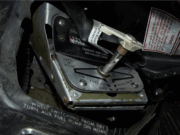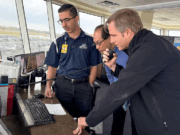
Image: © Steve Jurvetson | Wikimedia CC-BY 2.0
Advanced software systems are not only making cockpits more intuitive but also enhancing safety.
by Mario Pierobon | November 6, 2025

Image: © Steve Jurvetson | Wikimedia CC-BY 2.0

Accident Investigation, Flight Ops, Human Factors, News
The pilot of a Cessna U206 that crashed during a sightseeing flight, killing a passenger,…
by Linda Werfelman

Aviation Research, Flight Ops, News
Researchers say their system can eliminate misinterpretation and overcome weak transmissions.
by FSF Editorial Staff

Passenger briefings should emphasize the need to leave behind all carry-on items, the agency says.
by FSF Editorial Staff